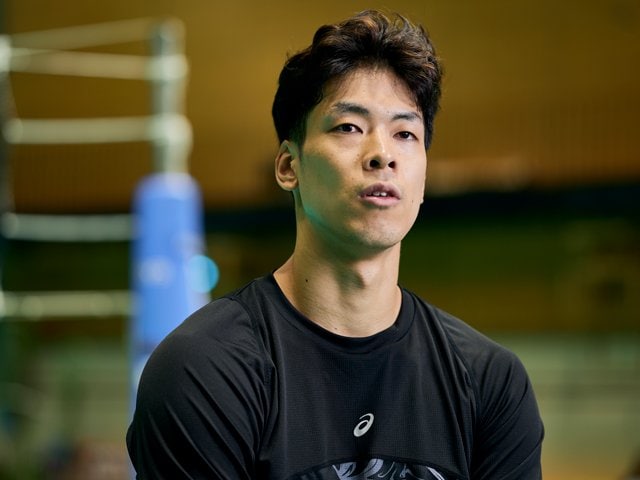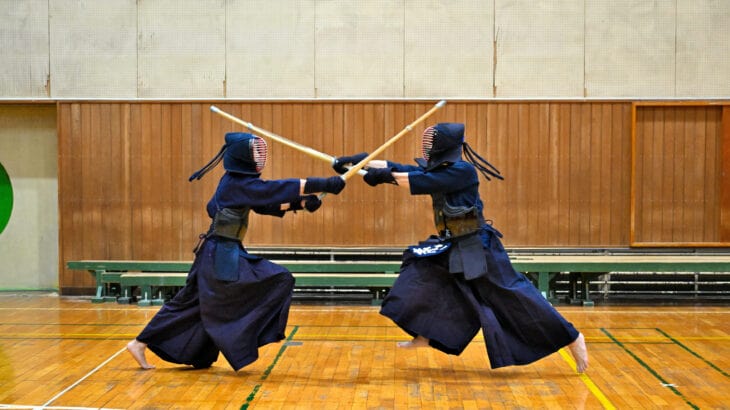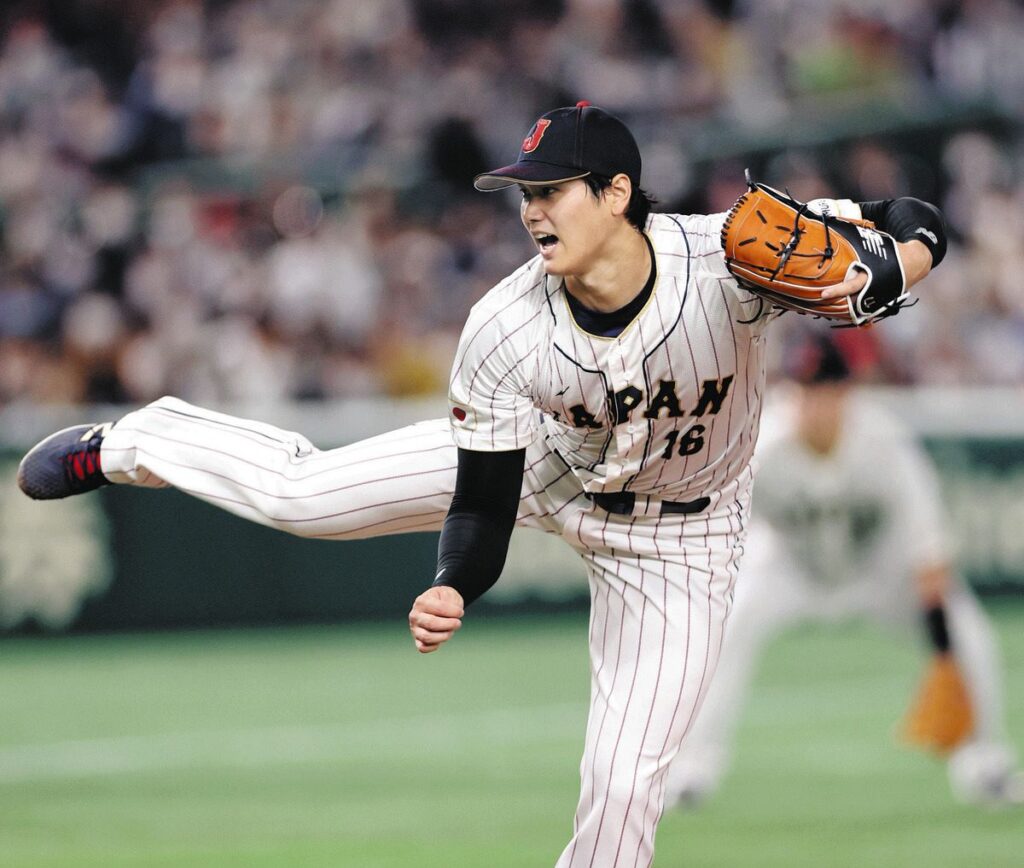
Practice swings in Kendo are basic practice that is essential for improving technique. It’s not just about swinging, it’s important to learn the correct posture and how to swing.
In this article, we will explain in detail Kendo Suburi tips from basic to advanced, effective practice methods, common mistakes and how to correct them.
It provides guidelines for beginners to acquire the correct techniques, as well as advanced content for experienced users to further hone their skills.
Through this article, you can maximize the effects of kendo practice swings and aim to improve your performance in practice and competitions.
目次
Basics of Kendo practice
Kendo practice is not just a simple swing movement, but an important practice method that builds the foundation of swordsmanship skills.
In this section, we will explain the basic meaning and purpose of practice swings, as well as the correct practice stance and its importance.
The basic meaning and purpose of practice swings
Suburi is a basic practice in Kendo that allows you to handle the sword naturally.
This allows the swordsman to get used to the weight of the sword and learn how to use the proper muscles when swinging.
Also, through a series of movements, you can develop the feeling that your body and sword are one.
Suburi not only improves technique, but also improves concentration and mental unity, making it a means to deeply understand the spirituality of Kendo.
Correct practice posture and its importance
Correct practice posture is the basis for performing techniques efficiently and safely.
The basic posture is to keep your feet shoulder-width apart and your knees slightly bent to keep your center of gravity low.
Keep your back straight, your shoulders relaxed, and your arms and sword in a straight line.
By performing practice swings from this posture, you will be able to swing the sword smoothly and accurately while avoiding unnecessary strain.
Correct posture reduces the risk of injury during long-term practice and contributes to more effective technique improvement.
In this way, suburi is an extremely important practice not only for learning Kendo techniques, but also for harmonizing the mind and body.
Doing the exercises in the correct way repeatedly is the shortcut to improving your Kendo skills.
Practice swing techniques: basic tips and practice methods
When practicing kendo, it is very important to understand the technical points and execute them accurately.
Here we provide technical essentials for effective practice swings and a step-by-step guide for beginners.
Technical points for effective practice swings
In order to get the most out of your practice swings, you need to know the following technical points:
- How to grip a sword: It is essential to grip the sword’s hilt properly. Grip firmly with your pinky and ring fingers, and hold the rest of your fingers in a loose, supportive position. This provides a flexible yet firm grip for better control of the sword.
- Initiating the swing: When starting the swing, it is important to raise the sword using your arms and hips, rather than your shoulders. This action allows for smooth swinging without unnecessary force.
- Downing motion: After raising the sword, when bringing it down, use the movements of your arms, body, and hips at the same time to forcefully bring it down. The trajectory of the sword should be straight and the force should be evenly distributed.
A step-by-step guide for beginners to practice
The practice steps for beginners to practice Kendo effectively are as follows:
- Checking the correct posture: Before starting practice swing, check the correct standing posture. Start with your feet shoulder-width apart, your knees slightly bent, and your back straight.
- Practice how to hold a sword: By learning the correct way to hold a sword and practicing it, you will grasp the basics of sword balance and swing.
- Start with small swings: At first, instead of making large swings, use small, short movements to get a feel for the sword and how to swing it.
- Gradually increase the movement: Gradually increase the width of the swing and practice so that you can perform the series of movements smoothly.
- Repetitive practice: Don’t aim for perfection all at once; repeat the same movements over and over again, gradually increasing your accuracy and speed.
Suburi may seem like a simple repetition of movements, but it is a fundamental practice that affects the entire Kendo technique.
For beginners, following these steps and steadily solidifying the basics is the key to improving in Kendo.
Common mistakes in practice swings and how to correct them
There are several mistakes that beginners, especially beginners, tend to make when practicing kendo.
Understanding these mistakes and making appropriate corrections will directly lead to improved technology.
Below is a detailed explanation of specific mistakes, countermeasures, and precautions.
Mistakes that beginners often make and how to deal with them
-
Using too much force: Many beginners use too much force when practicing swings. This will cause the swing to become stiff and disrupt the natural flow. As a countermeasure, practice swinging your sword in a relaxed manner, and be aware not to use more force than necessary.
-
Inaccurate sword trajectory: Beginners often swing their swords at an angle. This causes the sword to not be in a straight line when striking down, making it impossible to strike effectively. As a countermeasure, use a mirror to check the trajectory of your sword, or have your instructor check your form and make corrections.
-
Unstable foot position: If your foot position is unstable, your overall balance will be disrupted and you will not be able to perform effective practice swings. As a countermeasure, it is important to be conscious of the position of your feet and to maintain a sense of stability by bending your knees appropriately.
Points to note when practicing practice swings
- When performing practice swings continuously, it is important to take adequate rest. As fatigue accumulates, your form tends to deteriorate, so if you feel tired, take a break and recover your strength before restarting.
- When practicing swinging, always check the safety of your surroundings. Make sure you have enough space before practicing, especially if there are other people nearby.
- Emphasizing the quality of your practice swings and focusing on quality over quantity is the shortcut to improving your practice. Practicing repeatedly with correct form will improve your technique.
Suburi is one of the basics of Kendo, and if done correctly it will have a positive effect on your overall technique.
Practicing while being aware of the above measures and precautions will lead to effective skill improvement.
Advanced practice swing techniques for advanced players
In order for advanced kendo practitioners to further hone their skills, it is essential to learn advanced subfuri techniques.
Here, we will detail practice techniques for advanced players, how to practice them, and tips for improving specific techniques using practice swings.
Practice swing techniques and practice methods for advanced players
Practical swing techniques recommended for advanced players include:
- Practice swings with irregular rhythms: By changing the normal rhythm and performing practice swings at unpredictable times, you will train your reaction speed and coordination. For example, practice by changing the rhythm, such as making a quick three-swing followed by a slow, powerful swing.
- One-handed swing: Practice using only one hand to improve the strength and precision of that hand. In particular, practice swings with the left hand are useful for learning well-balanced techniques in Kendo, which is often dominated by the right hand.
- Blindfold practice swing: Practice swing with your eyes closed to develop your sword sense and body balance. It is important to feel the position and movement of the sword without relying on sight.
Tips for improving specific techniques using practice swings
Tips for improving specific kendo techniques through practice swings include:
- Practice of cutting back: Improve your ability to control the sword by repeating the cutting movement of rapidly changing the direction of the sword during practice. This is especially effective during matches when quick reactions are required.
- Practicing how to relax your force: By practicing momentarily relaxing your force between the raising and lowering of your practice swing, you will be able to hit more naturally and with more force. Knowing when to relax is directly connected to honing your technique.
- Strengthening your endurance: Increase your endurance by practicing practice swings over a long period of time. This allows you to build a body that is less tiring even during long matches and continuous techniques.
By incorporating these advanced practice techniques and specific tips into their practice, advanced practitioners can further deepen their technique and get to the heart of Kendo.
Tips to maximize the effect of practice swings
Suburi is a basic and effective practice method for improving Kendo techniques.
In order to get the most out of this exercise, it is very important to balance the method, frequency, and intensity of the exercise.
Below, we’ll explain how to most effectively practice practice swings, and the right balance between practice frequency and intensity.
Efficient way to practice practice swings
- Set clear goals: Before you start practicing, set specific goals that you want to achieve with your practice that day. For example, a clear goal will lead to efficient practice, such as “maintaining an accurate sword trajectory” or “maintaining accuracy while increasing speed.”
- Gradual difficulty: It is important to start with basic practice swings and gradually increase the difficulty. After you have mastered the basics, you can expect to improve your overall technique by moving on to more advanced techniques such as irregular rhythms and one-handed practice swings.
- Utilize feedback: By recording a video of your own practice and looking back, you can discover and correct any problems you may have missed. It is also important to receive regular feedback from your instructor.
Balancing exercise frequency and intensity
- Appropriate frequency: Ideally, you should practice practice every day, but it is important to adjust it according to your physical condition and schedule. Aim to practice practice swings at least three to four times a week.
- Intensity of practice: It is effective to vary the intensity of practice from day to day. Try to maintain a balance by doing a lot of repetitions one day, and then doing fewer repetitions the next day to improve the precision of your technique.
- Allow time for recovery: After high-intensity exercise, it is important to take adequate rest. Adequate rest is essential for muscle and nervous system recovery, and over-exercising can be counterproductive.
In this way, the key to maximizing the effectiveness of practice swings is to proceed in a planned manner and balance the appropriate frequency and intensity.
By being aware of these things, you can greatly contribute to improving your Kendo techniques.
summary
Kendo practice is an extremely important practice method for training the basics of technique and laying the foundation for improvement.
Through this article, we will cover the basic meaning of practice swings, the importance of correct posture, effective practice methods, techniques for beginners and advanced players, how to correct common mistakes, and tips for maximizing the effectiveness of your practice. I explained it in detail.
- It is important for beginners to start by learning correct posture and basic movements. This will help you learn the basics of proper Kendo.
- Advanced players can hone their skills by incorporating more advanced techniques and irregular practice methods.
- By maintaining an appropriate balance between practice frequency and intensity, and using regular feedback, you can further improve the effectiveness of your practice swings.
Suburi is not just a formal practice in Kendo, but is an important element that is directly connected to improving technique, unifying the mind, and increasing physical strength.
How you incorporate practice swings into your daily practice will determine the speed and quality of your progress in Kendo.
We hope this guide will help you grow and improve your skills at each stage of Kendo.





